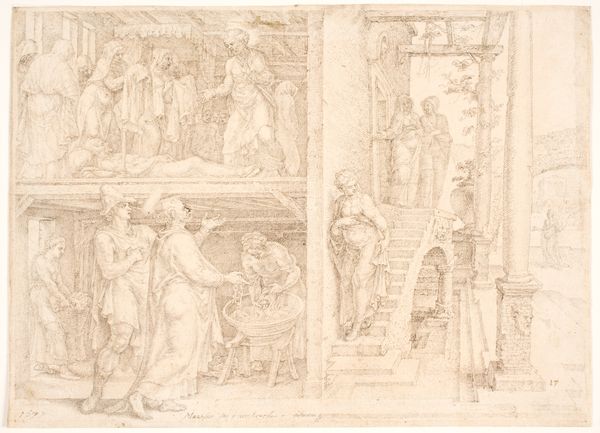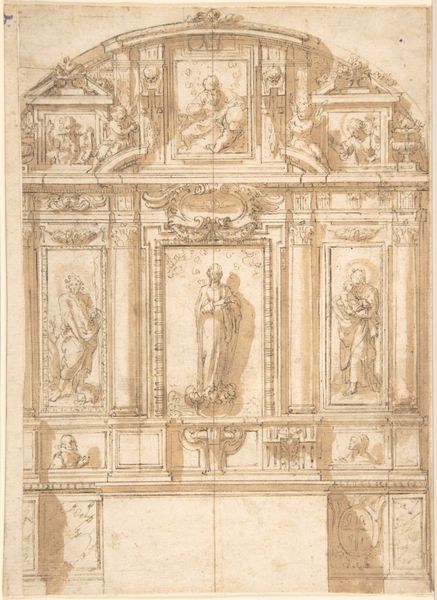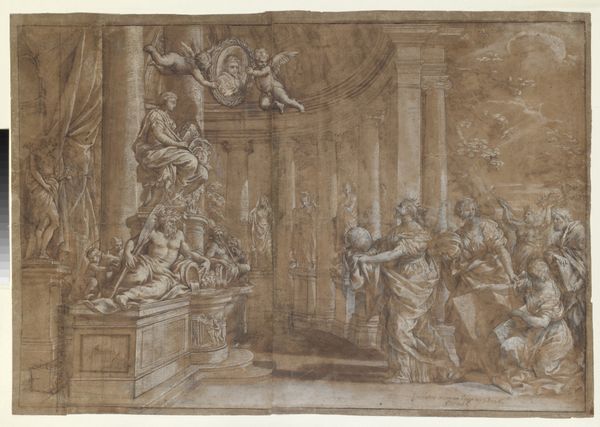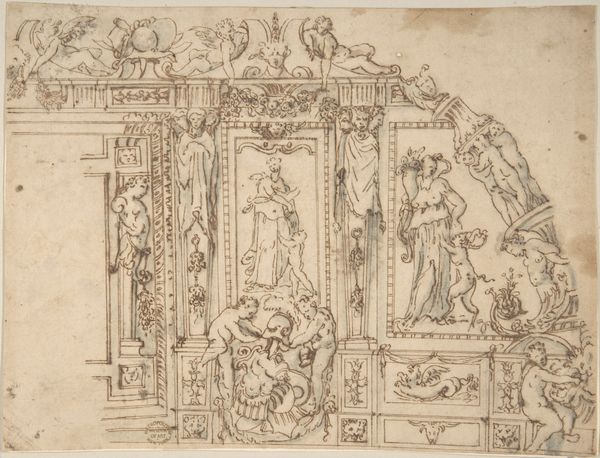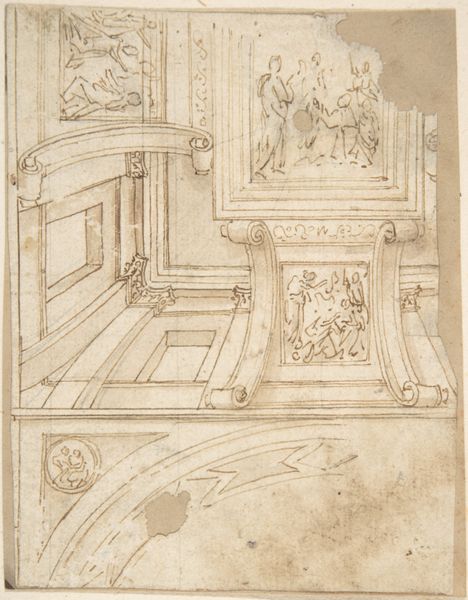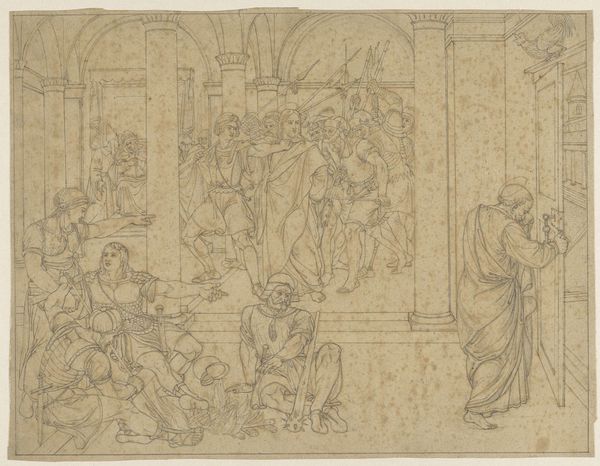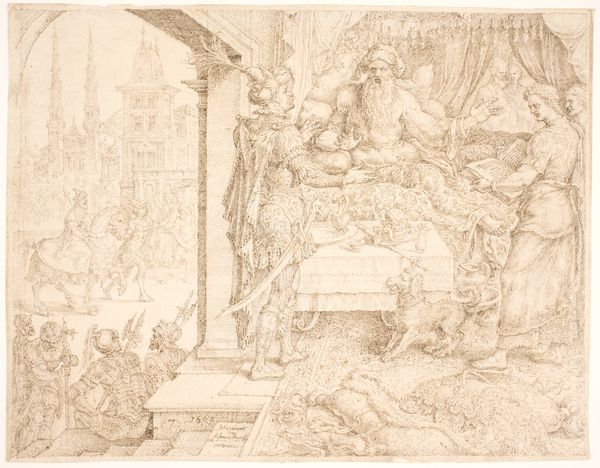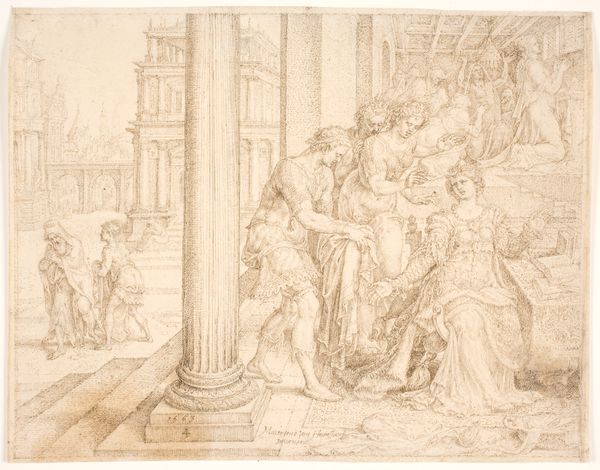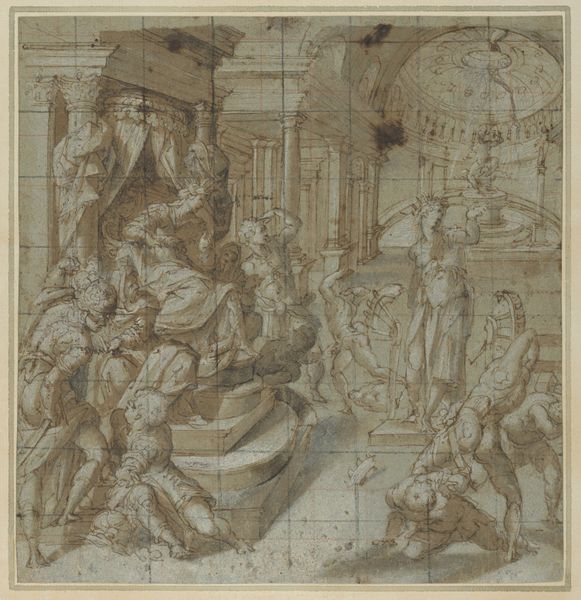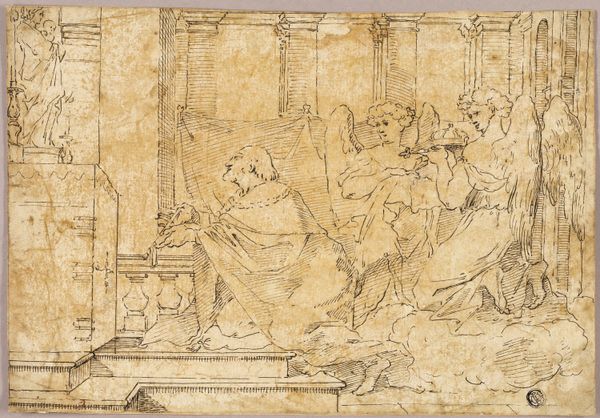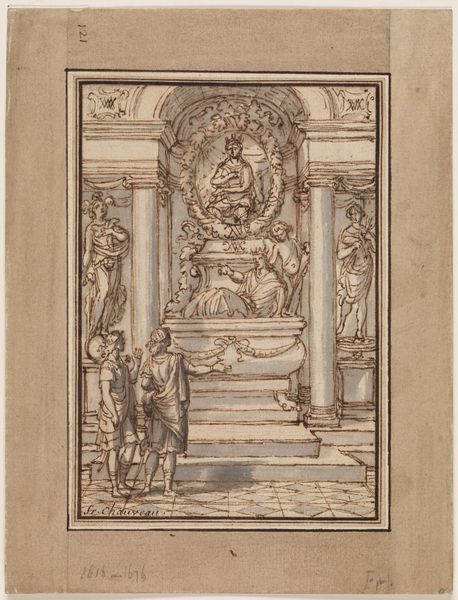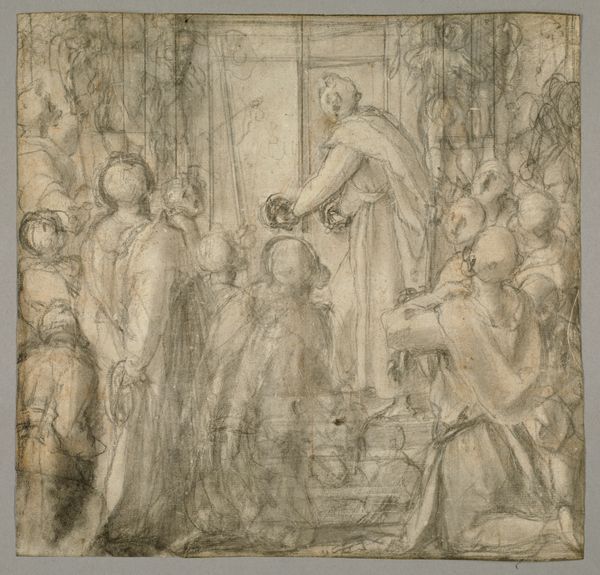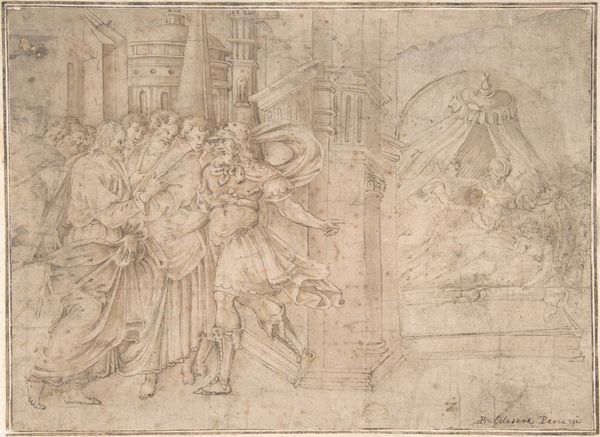
Design Fragment for the Left Side of the 'Fonte Gaia' in Siena 1415 - 1416
0:00
0:00
drawing, paper, ink
#
drawing
#
narrative-art
#
classical-realism
#
figuration
#
paper
#
ink
#
history-painting
#
italian-renaissance
#
early-renaissance
Dimensions: 7-13/16 x 8-7/16 in. (20.1 x 21.4 cm)
Copyright: Public Domain
Editor: This is "Design Fragment for the Left Side of the 'Fonte Gaia' in Siena," an ink drawing on paper, dating back to 1415-1416, by Jacopo della Quercia. It's a preparatory drawing. What strikes me is the intricate architectural structure, but also the subtle details in the figures’ poses. How do you interpret this work, especially considering its historical context? Curator: This fragment gives us insight into the evolving humanist philosophies of the Early Renaissance and the social role art played. Public fountains weren’t just sources of water; they were civic statements. Quercia's Fonte Gaia, the 'Fountain of Joy', celebrated Siena's communal identity. Consider how the artist employs classical figuration here to align his city with the grandeur of Rome. Editor: That's a really interesting connection. So it was not just a practical structure, but really a reflection of Siena's self-image at the time? Curator: Exactly. Look at how he envisions the figures: idealized, dignified, conveying a sense of civic pride. The use of ink allows for meticulous study, but also a way of engaging with a narrative that spoke to cultural heritage. Can you sense the artist grappling with both the aesthetic language of the classical world, while navigating the religious conventions? Editor: Now that you mention it, the way Mary and Child are represented has a kind of ancient gravitas. I suppose I hadn't fully considered the balancing act between those influences. Curator: It prompts questions about power dynamics. Who commissioned it and who would have enjoyed access to this space? And how do those factors shape our understanding? This goes beyond simple aesthetics; we are witnessing the birth of a renewed cultural consciousness. Editor: This gives me a whole new perspective! I'm seeing it as more than just a drawing, it's a cultural and political document as well. Curator: Precisely!
Comments
No comments
Be the first to comment and join the conversation on the ultimate creative platform.
